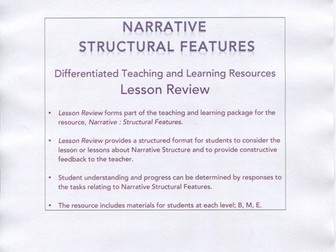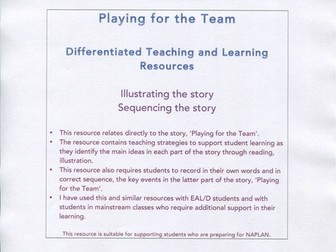Narrative Structural Features : Basic Structure
These differentiated resources support the teaching of Narrative Structural Features and can be used by students preparing for NAPLAN. <br />
<br />
The resources have been used to teach, revise and consolidate understanding of narrative structure in single-grade and multi-age classrooms in urban, rural and remote schools. <br />
<br />
Initially, the Basic Structure resources were prepared for teaching students who were in the early stages of learning Narrative Structure. However, I've also used these resources with students throughout the primary school and in the early years of secondary school.<br />
<br />
‘Narrative Structural Features’ is organised in three levels; Basic, Mid-Level and Extended structure. The levels are explained in the free resource, 'Notes for Teachers'.
















